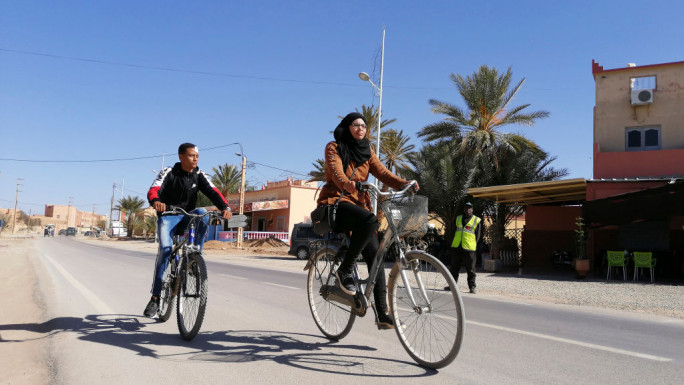
We investigated the Israeli army's claim that Hamas falsified polls after October 7 — the numbers don't add up
On August 29, the Israeli army released documents alleging that Hamas had covertly manipulated public support levels in polls conducted by the Palestinian Center for Policy and Survey Research (PCPSR) in Ramallah.
However, an investigation by Misbar has uncovered discrepancies in the purported 'Hamas documents.'
Between March 5 and 10, 2024, the Palestinian Center for Policy and Survey Research (PSR) conducted a poll examining the views of residents in the West Bank and Gaza Strip. To ensure safety, data collection in Gaza was limited to relatively secure areas, excluding regions experiencing daily conflict or Israeli military deployment.
The poll sampled 1,580 adults, with 830 interviews conducted in the West Bank and 750 in Gaza. Given the uncertain population distribution in Gaza, the sample size there was nearly doubled to minimize the margin of error.
The data was then weighted to accurately reflect the population distribution between the West Bank and the Gaza Strip, ensuring the sample's representativeness. Generally, the poll conducted by PSR finds a decline in support for Hamas in both the Gaza Strip and the West Bank. Despite this, popular support for October 7 remains steady, with 71% of Palestinians in both regions endorsing the operation.
On August 29, the Israeli army announced that it had uncovered documents revealing a coordinated effort by Hamas to manipulate public opinion polls conducted by the Palestinian Center for Policy and Survey Research (PSR).
These documents, reportedly retrieved from Hamas's General Security Apparatus during operations in Gaza, include images comparing the original and altered PSR poll results from March 2024.
According to the Israeli army's claim, these falsified results were intended to create a deceptive image of widespread public support for Hamas and its leadership, particularly following October 7.
Israel's army further claimed that the documents reveal a deliberate strategy by Hamas to disguise its declining support and influence perceptions both within Palestinian territories and on the international stage.
The Israeli army also stated that there is no evidence to suggest that the Palestinian Center for Policy and Survey Research (PSR) was involved in the falsification of the poll results, emphasising that Hamas acted independently.
The Israel army's statement included documents with graphics illustrating the survey results from March 2024.
In addition, the military attached another document purportedly originating from Hamas' General Security Unit in the Gaza Strip. Translations of these original documents were also provided as part of the attachments.
Prominent Palestinian pollster Khalil Shikaki, who heads the Palestinian Center for Policy and Survey Research (PSR), expressed scepticism about the Israeli army's claim that Hamas had falsified poll results in Gaza.
Shikaki told Misbar via email that the accusation was likely part of "the Israeli-Hamas psychological warfare; a war over the narratives that has serious political implications," adding, "There might be a good reason for the army to say what it said, but listen to Netanyahu who actually tells a very different story.
"Netanyahu wants to continue the war by showing that Hamas is still strong and popular and the army must continue the attack until it is destroyed, total victory. The army on the other hand wants to end the war and if it can show that Hamas has lost popular support, then the mission is partially accomplished and the war can end; this is essentially the defense minister’s view."
Shikaki urged Misbar to investigate the two untranslated questions that the Israeli army overlooked, asking, "Why [the army] translated into English only seven questions, that Hamas allegedly manipulated, while ignoring two more questions that one can find in the Arabic text of the letter allegedly written by Hamas?"
It was Israel, not Hamas, that tampered with evidence
Misbar's investigative team thoroughly analysed the documents shared by the Israeli army regarding the alleged Hamas three documents and found several discrepancies.
Misbar found that the Israeli army only translated seven out of nine questions from the Arabic document to English, omitting two questions from the Arabic version of the Israeli army-released alleged Hamas document that presented the 'actual poll results.'
In the first inconsistency identified by Misbar, the question asked was, "If it were up to you, whom would you prefer to see governing the Gaza Strip after the end of the war from the following list?"
The real poll results of the question released by PSR show that 52% of the Gaza Strip selected Hamas to govern the Gaza Strip after the war.
Misbar's investigative team compared the same poll question across three different Israeli army sources: the Arabic document that the Israeli army claimed to have found in Gaza, the same question featured in a video published by the head of COGAT, and the translated version of the question published on the Israeli army's official website.
Misbar's investigation revealed two major inconsistencies among the three Israeli army's sources. Firstly, the numbers in the "faked results" column, highlighted by Misbar with a red line, differ between the Arabic document results at the top, which total 100%, and the corresponding results in the lower right and left sides of the photo, which total 99%. This discrepancy further undermines the consistency of the Israeli army's claims.
Furthermore, when Misbar’s team calculated the numbers provided by the Israeli army across the three alleged Hamas results for the same poll question, they found that the "actual results" column — marked by Misbar with a green line — added up to 99.62% instead of the expected 100%. This discrepancy highlights a lack of consistency in the data presented.
Moreover, Misbar's investigative team analysed the two questions left untranslated by the Israeli army in the alleged Arabic Hamas document and uncovered several discrepancies that suggest the documents were fabricated.
The penultimate question of the Arabic alleged Hamas document asks: "If new elections agreed to by all factions are held today and the same lists that took part in the last PLC elections were nominated, for whom would you vote?"
Misbar found that the author of the alleged Hamas document, perhaps unintentionally, presents results for both the West Bank and the Gaza Strip. The author mentioned the same results as the original PSR poll results of the same question, contradicting the alleged Hamas letter's claim that it only pertains to Gaza.
Misbar's investigation noted that the author of the alleged document mistakenly used the combined results for the West Bank and Gaza in the "faked results" column, marked by Misbar with a red line, instead of only the Gaza Strip as it was supposed to be.
This raises a critical question: how did the author, likely the Israeli army, know the findings from the West Bank? This discrepancy further supports the notion that the Israeli army fabricated the alleged Hamas documents released in Gaza.
Additionally, when Misbar’s team calculated the numbers provided by the Israeli army for the alleged Hamas poll results for the same question, they found that the "actual results" column — marked by Misbar with a green line — totalled 100.7% instead of 100%. Meanwhile, the alleged "faked results" — marked with a red line — added up to 101%. This further indicates inaccuracies in the data presented.
For the final untranslated question, which asks Palestinians in the West Bank and Gaza about the political parties they support, Misbar’s analysis uncovered further inconsistencies in the alleged Hamas document revealed by the Israeli army.
Upon calculation, Misbar found that the "actual results" column — marked with a green line — totalled 100.94% instead of the expected 100%. Additionally, the document claimed that the results marked with red lines were fake; however, these results precisely reflect the actual PSR findings for the same poll question, totalling exactly 100%.
Throughout the process, Khalil Shikaki and the PSR have continually assured international bodies and news outlets of the polling centres independence and transparency. In an interview with the prominent publication The New Yorker, Khalil explained how he ensured the safety of his polling workers by equipping them with tablets to track their movements from his research centre in the West Bank.
The workers were also part of a WhatsApp group chat to receive alerts about immediate dangers, including fighting and bombardments in Gaza, as well as violence between Israeli settlers and Palestinians in the West Bank.
If there had been any intrusion by Hamas members concerning the data collectors in Gaza, they would have contacted the centre in the West Bank to report any potential risks.
Ten days after the data collectors completed their fieldwork, Shikaki released the findings on March 20, as per the article.
“Our Gaza team worked with us for more than 20 years. But we will investigate all claims as part of a commitment to ensure full quality control," reiterated Shikaki to The Times of Israel.
Wesam Abo Marq is a Palestinian journalist, writer, and English-Arabic translator. He currently works as an English language lecturer at the Islamic University of Gaza and as a freelance translator for the Palestinian Return Center in London.
Follow him on X: @wesam_mahmad
This piece was first published on Misbar.com
Have questions or comments? Email us at: editorial-english@newarab.com
Opinions expressed in this article remain those of the author and do not necessarily represent those of The New Arab, its editorial board or its staff.








![Palestine sat next to member states at the United Nations General Assembly on Tuesday [GETTY]](/sites/default/files/styles/image_684x385/public/1441455581.jpeg?h=199d8c1f&itok=CgJaFY6v)



